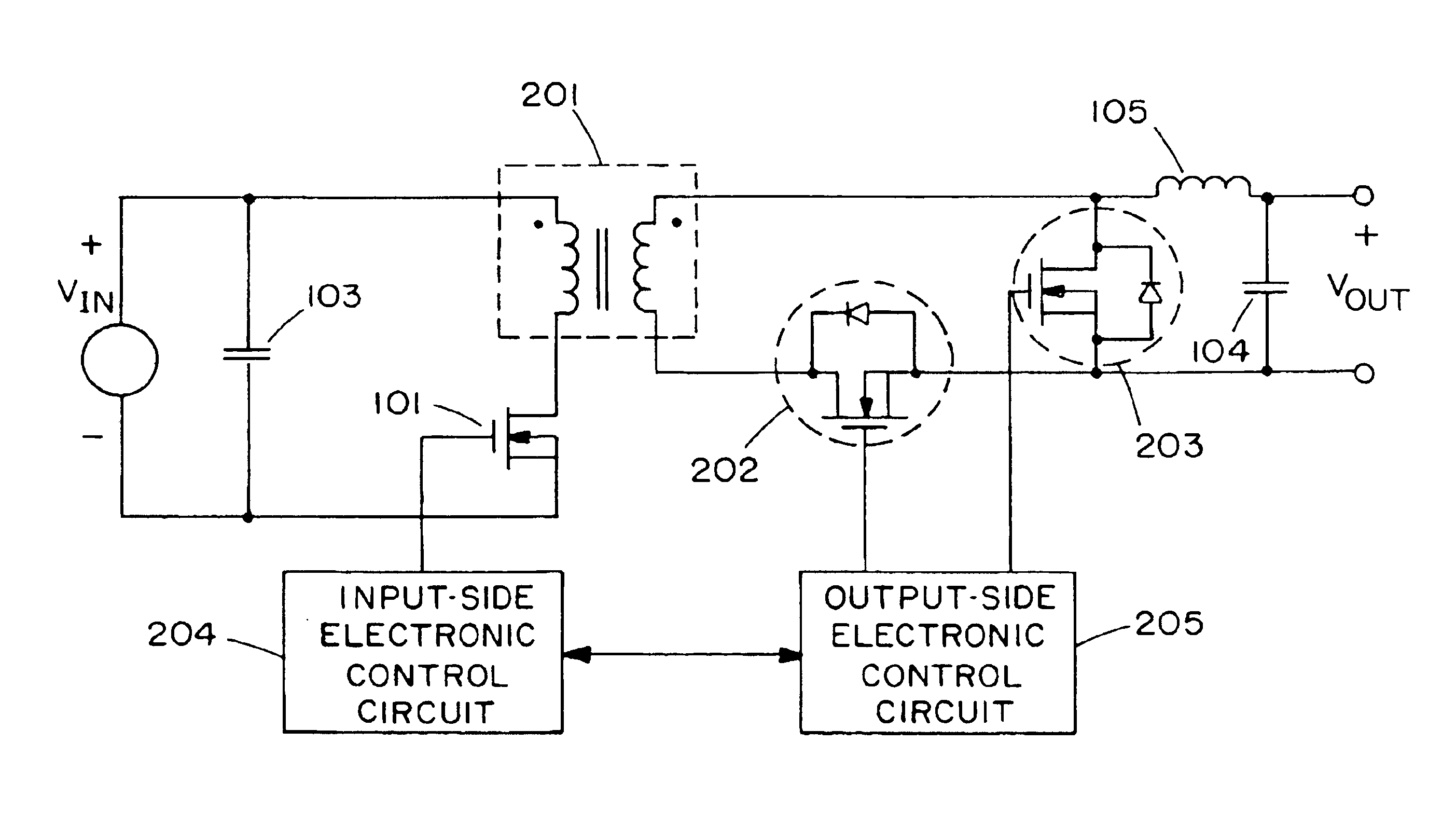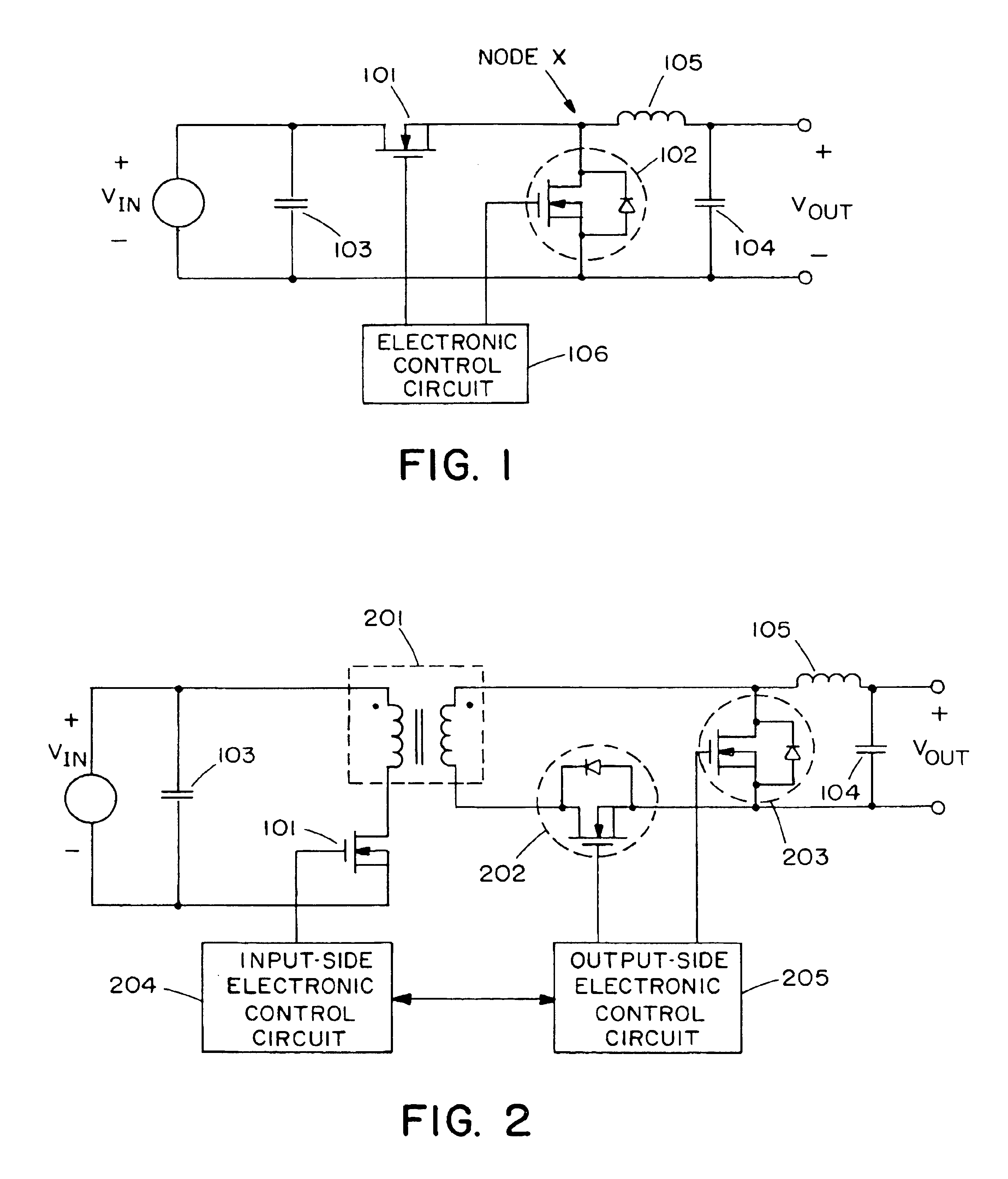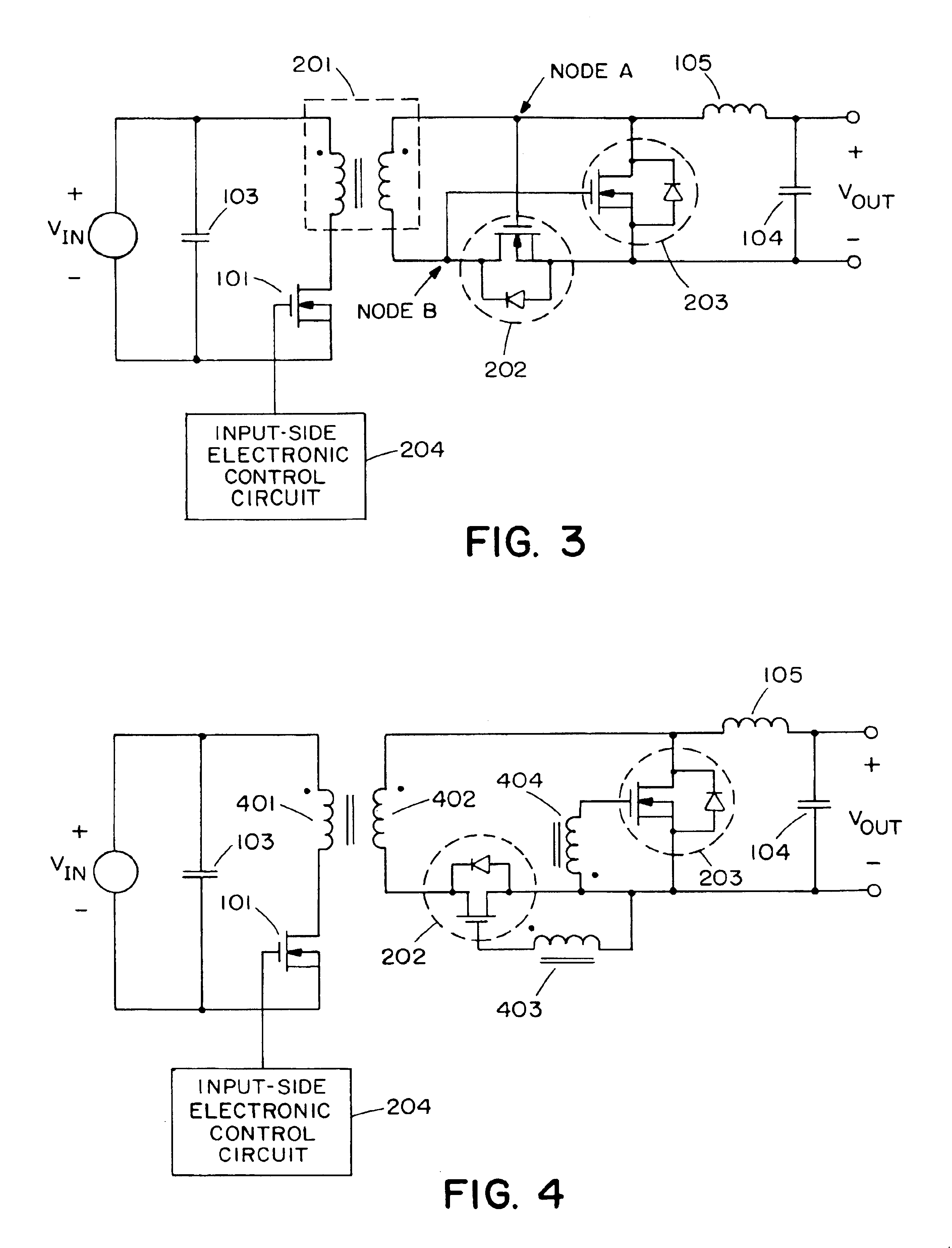Control of DC/DC converters having synchronous rectifiers
a technology of synchronous rectifiers and converters, which is applied in the direction of automatic control, process and machine control, instruments, etc., can solve the problems of difficult work, inability to work, and inability to work
- Summary
- Abstract
- Description
- Claims
- Application Information
AI Technical Summary
Benefits of technology
Problems solved by technology
Method used
Image
Examples
Embodiment Construction
[0053]A description of preferred embodiments of the invention follows.
[0054]Throughout this discussion, MOSFETs will be used to implement the synchronous rectifiers and the ORing transistors since the MOSFET is the preferred device at this time. One skilled in the art would know how to incorporate the concepts presented here for other types of transistors that might instead be used.
[0055]When synchronous rectifiers are used in a dc / dc converter, there are two ways to provide the control terminals the signals necessary to turn the controlled rectifiers on and off during the switching cycle. One approach, hereafter referred to as the “active-drive” approach, is to provide the control signal with electronic circuitry that may get its timing information from other electronic circuitry or from voltage or current waveforms within the power circuit. The second approach, hereafter referred to as the “passive-drive” approach, is to provide the control signal either directly or through passiv...
PUM
 Login to view more
Login to view more Abstract
Description
Claims
Application Information
 Login to view more
Login to view more - R&D Engineer
- R&D Manager
- IP Professional
- Industry Leading Data Capabilities
- Powerful AI technology
- Patent DNA Extraction
Browse by: Latest US Patents, China's latest patents, Technical Efficacy Thesaurus, Application Domain, Technology Topic.
© 2024 PatSnap. All rights reserved.Legal|Privacy policy|Modern Slavery Act Transparency Statement|Sitemap



